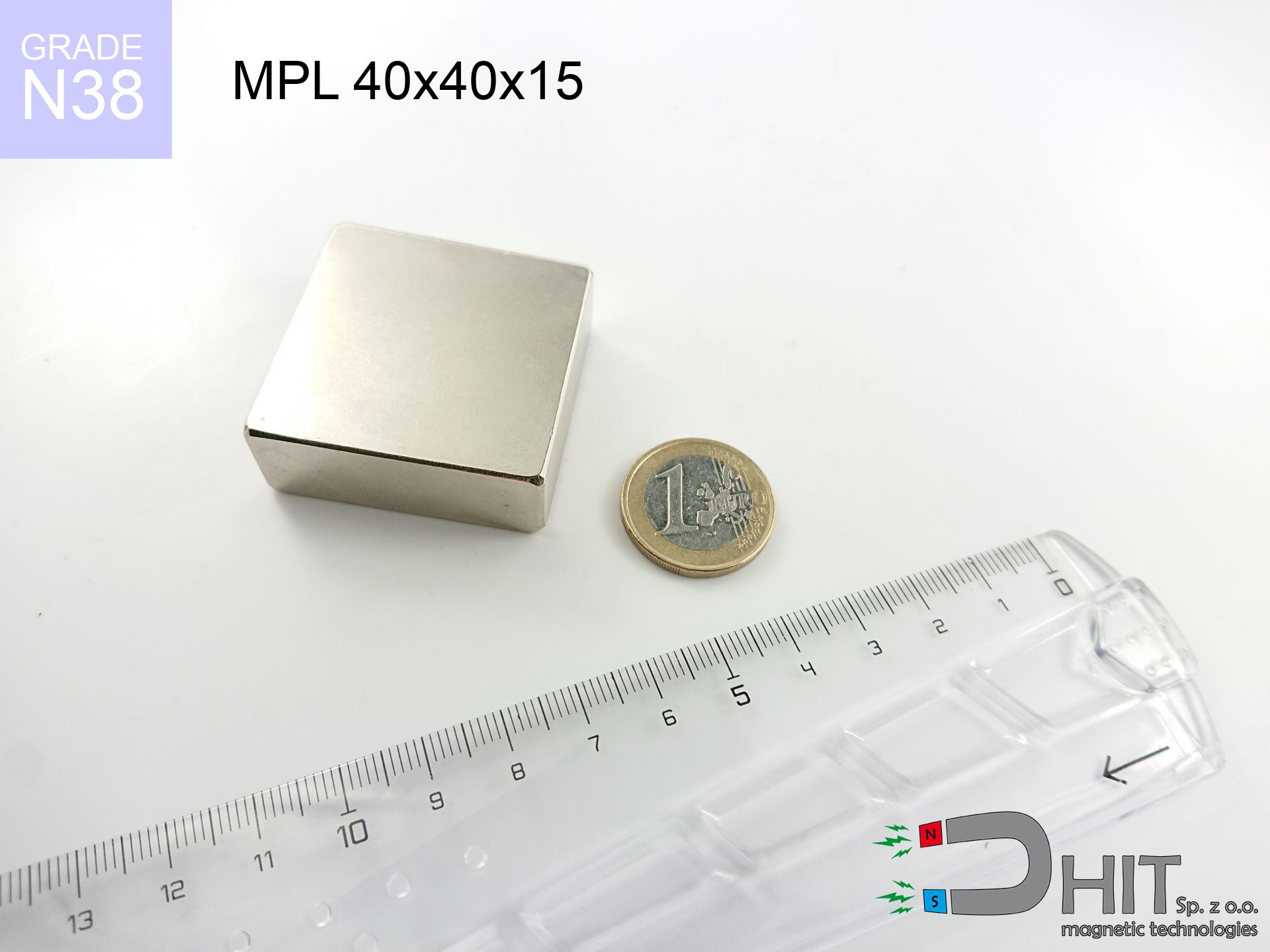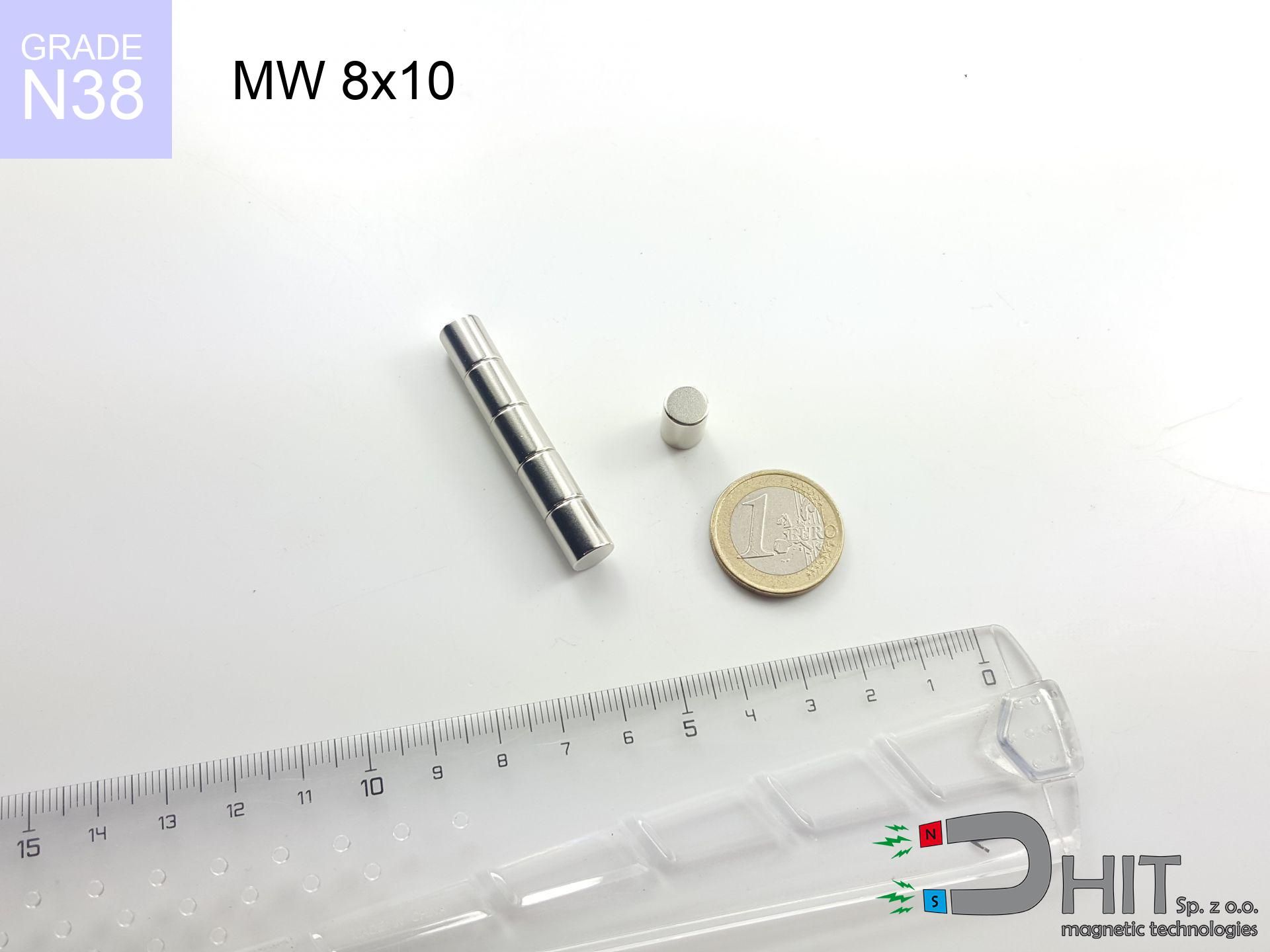SM 32x425 [2xM8] / N42 - magnetic separator
magnetic separator
Catalog no 130380
GTIN/EAN: 5906301813286
Diameter Ø
32 mm [±1 mm]
Height
425 mm [±1 mm]
Weight
2280 g
Magnetic Flux
~ 8 000 Gauss [±5%]
1266.90 ZŁ with VAT / pcs + price for transport
1030.00 ZŁ net + 23% VAT / pcs
bulk discounts:
Need more?
Contact us by phone
+48 888 99 98 98
otherwise contact us using
request form
the contact form page.
Force along with appearance of neodymium magnets can be checked on our
our magnetic calculator.
Same-day shipping for orders placed before 14:00.
Technical details - SM 32x425 [2xM8] / N42 - magnetic separator
Specification / characteristics - SM 32x425 [2xM8] / N42 - magnetic separator
| properties | values |
|---|---|
| Cat. no. | 130380 |
| GTIN/EAN | 5906301813286 |
| Production/Distribution | Dhit sp. z o.o. |
| Country of origin | Poland / China / Germany |
| Customs code | 85059029 |
| Diameter Ø | 32 mm [±1 mm] |
| Height | 425 mm [±1 mm] |
| Weight | 2280 g |
| Material Type | Stainless steel AISI 304 / A2 |
| Magnetic Flux | ~ 8 000 Gauss [±5%] |
| Size/Mount Quantity | 2xM8 |
| Polarity | circumferential - 16 poles |
| Casing Tube Thickness | 1 mm |
| Manufacturing Tolerance | ±1 mm |
Magnetic properties of material N42
| properties | values | units |
|---|---|---|
| remenance Br [min. - max.] ? | 12.9-13.2 | kGs |
| remenance Br [min. - max.] ? | 1290-1320 | mT |
| coercivity bHc ? | 10.8-12.0 | kOe |
| coercivity bHc ? | 860-955 | kA/m |
| actual internal force iHc | ≥ 12 | kOe |
| actual internal force iHc | ≥ 955 | kA/m |
| energy density [min. - max.] ? | 40-42 | BH max MGOe |
| energy density [min. - max.] ? | 318-334 | BH max KJ/m |
| max. temperature ? | ≤ 80 | °C |
Physical properties of sintered neodymium magnets Nd2Fe14B at 20°C
| properties | values | units |
|---|---|---|
| Vickers hardness | ≥550 | Hv |
| Density | ≥7.4 | g/cm3 |
| Curie Temperature TC | 312 - 380 | °C |
| Curie Temperature TF | 593 - 716 | °F |
| Specific resistance | 150 | μΩ⋅cm |
| Bending strength | 250 | MPa |
| Compressive strength | 1000~1100 | MPa |
| Thermal expansion parallel (∥) to orientation (M) | (3-4) x 10-6 | °C-1 |
| Thermal expansion perpendicular (⊥) to orientation (M) | -(1-3) x 10-6 | °C-1 |
| Young's modulus | 1.7 x 104 | kg/mm² |
Table 1: Rod construction
SM 32x425 [2xM8] / N42
| Parameter | Value | Description / Unit |
|---|---|---|
| Diameter (Ø) | 32 | mm |
| Total length | 425 | mm (L) |
| Active length | 389 | mm |
| Section count | 16 | modules |
| Dead zone | 36 | mm (2x 18mm starter) |
| Weight (est.) | ~2598 | g |
| Active area | 391 | cm² (Area) |
| Housing material | AISI 304 | 1.4301 (Inox) |
| Surface finish | Ra < 0.8 µm | Polished |
| Temp. class | 80°C | Standard (N) |
| Force loss (at max °C) | -12.8% | Reversible loss (physics) |
| Force (calculated) | 17.3 | kg (theor.) |
| Induction (surface) | ~6 500 | Gauss (Max) |
Chart 2: Field profile (16 sections)
Chart 3: Temperature performance
Chemical composition
| iron (Fe) | 64% – 68% |
| neodymium (Nd) | 29% – 32% |
| boron (B) | 1.1% – 1.2% |
| dysprosium (Dy) | 0.5% – 2.0% |
| coating (Ni-Cu-Ni) | < 0.05% |
Environmental data
| recyclability (EoL) | 100% |
| recycled raw materials | ~10% (pre-cons) |
| carbon footprint | low / zredukowany |
| waste code (EWC) | 16 02 16 |
See more proposals
Advantages and disadvantages of rare earth magnets.
Pros
- They virtually do not lose power, because even after 10 years the decline in efficiency is only ~1% (based on calculations),
- Magnets effectively protect themselves against demagnetization caused by ambient magnetic noise,
- By using a lustrous coating of nickel, the element gains an aesthetic look,
- The surface of neodymium magnets generates a maximum magnetic field – this is a distinguishing feature,
- Thanks to resistance to high temperature, they can operate (depending on the form) even at temperatures up to 230°C and higher...
- Thanks to modularity in forming and the ability to modify to specific needs,
- Significant place in electronics industry – they find application in mass storage devices, brushless drives, precision medical tools, as well as multitasking production systems.
- Compactness – despite small sizes they generate large force, making them ideal for precision applications
Disadvantages
- They are fragile upon heavy impacts. To avoid cracks, it is worth securing magnets using a steel holder. Such protection not only shields the magnet but also increases its resistance to damage
- We warn that neodymium magnets can lose their strength at high temperatures. To prevent this, we recommend our specialized [AH] magnets, which work effectively even at 230°C.
- When exposed to humidity, magnets start to rust. For applications outside, it is recommended to use protective magnets, such as magnets in rubber or plastics, which prevent oxidation and corrosion.
- Limited ability of producing nuts in the magnet and complicated forms - preferred is a housing - magnetic holder.
- Health risk resulting from small fragments of magnets can be dangerous, when accidentally swallowed, which gains importance in the aspect of protecting the youngest. Additionally, tiny parts of these products can complicate diagnosis medical in case of swallowing.
- Due to expensive raw materials, their price is relatively high,
Pull force analysis
Maximum magnetic pulling force – what contributes to it?
- using a plate made of low-carbon steel, acting as a circuit closing element
- possessing a massiveness of at least 10 mm to ensure full flux closure
- characterized by even structure
- without the slightest clearance between the magnet and steel
- during detachment in a direction perpendicular to the plane
- at ambient temperature approx. 20 degrees Celsius
Impact of factors on magnetic holding capacity in practice
- Distance – existence of foreign body (paint, tape, air) interrupts the magnetic circuit, which lowers capacity rapidly (even by 50% at 0.5 mm).
- Force direction – remember that the magnet holds strongest perpendicularly. Under sliding down, the capacity drops drastically, often to levels of 20-30% of the nominal value.
- Wall thickness – thin material does not allow full use of the magnet. Magnetic flux passes through the material instead of generating force.
- Metal type – different alloys reacts the same. High carbon content worsen the attraction effect.
- Smoothness – full contact is possible only on polished steel. Rough texture create air cushions, reducing force.
- Operating temperature – neodymium magnets have a sensitivity to temperature. At higher temperatures they lose power, and at low temperatures they can be stronger (up to a certain limit).
Lifting capacity was assessed with the use of a polished steel plate of optimal thickness (min. 20 mm), under vertically applied force, however under parallel forces the load capacity is reduced by as much as fivefold. In addition, even a slight gap between the magnet’s surface and the plate decreases the lifting capacity.
H&S for magnets
Risk of cracking
NdFeB magnets are ceramic materials, which means they are prone to chipping. Collision of two magnets leads to them shattering into small pieces.
Sensitization to coating
A percentage of the population suffer from a hypersensitivity to Ni, which is the common plating for neodymium magnets. Extended handling can result in a rash. We strongly advise use safety gloves.
Combustion hazard
Machining of NdFeB material poses a fire risk. Neodymium dust oxidizes rapidly with oxygen and is difficult to extinguish.
Protect data
Data protection: Neodymium magnets can damage data carriers and delicate electronics (heart implants, medical aids, timepieces).
Caution required
Exercise caution. Neodymium magnets act from a distance and snap with huge force, often quicker than you can react.
Threat to navigation
Note: neodymium magnets produce a field that interferes with sensitive sensors. Keep a safe distance from your phone, device, and GPS.
Bone fractures
Protect your hands. Two powerful magnets will join immediately with a force of several hundred kilograms, destroying everything in their path. Be careful!
Swallowing risk
Adult use only. Tiny parts can be swallowed, causing severe trauma. Store away from children and animals.
Maximum temperature
Regular neodymium magnets (grade N) lose magnetization when the temperature exceeds 80°C. Damage is permanent.
Danger to pacemakers
Life threat: Strong magnets can deactivate heart devices and defibrillators. Stay away if you have electronic implants.

![Magnetic bar SM 32x425 [2xM8] / N42 Magnetic bar SM 32x425 [2xM8] / N42](https://cdn3.dhit.pl/graphics/banners/magnet.webp)
![SM 32x425 [2xM8] / N42 - magnetic separator](https://cdn3.dhit.pl/graphics/products/sm-32x425-2xm8-woj.jpg)


![BM 510x180x70 [4x M8] - magnetic beam BM 510x180x70 [4x M8] - magnetic beam](https://cdn3.dhit.pl/graphics/products/bm-510x180x70-4x-m8-cem.jpg)


